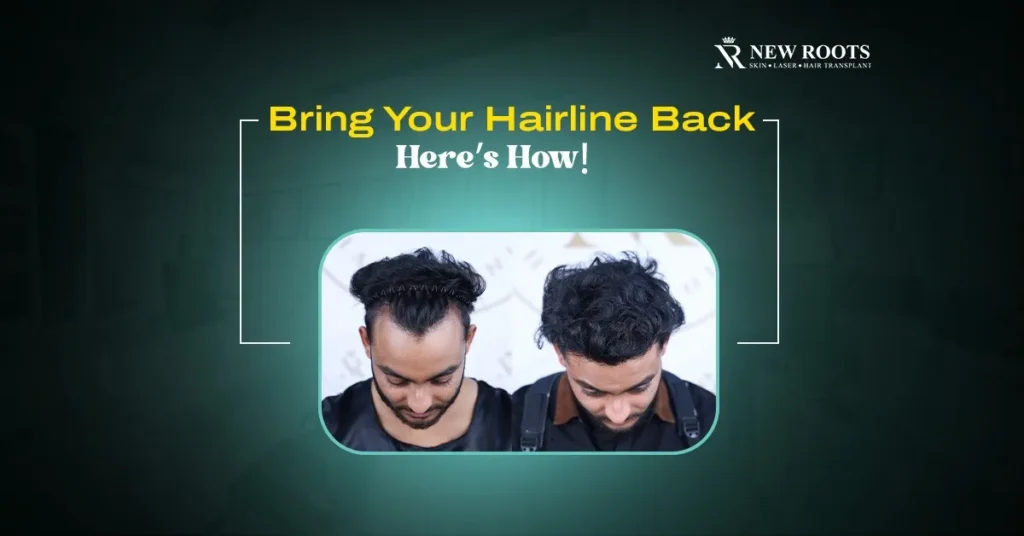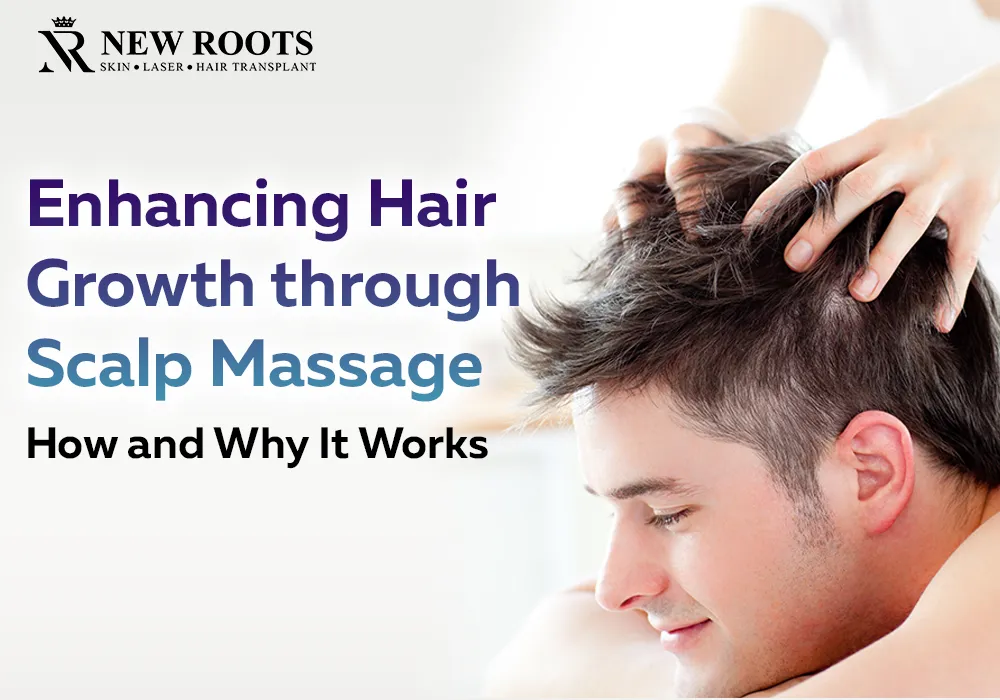As much as people would like to appear young, this is especially true for their hairline, their health, and their density.
Nonetheless, a thinning hairline is a problem that many clients, specifically those from India, go through as a result of either their genes, bodily hormone imbalances, or way of living.
Therefore, regaining the hairline starts with learning how to get hairline back—including how to wash your head properly, what care your hairline requires, and which products to use, together with a change in diet and even regular exercise.
As discussed in this guide, there is much more to learn about the best solutions for regaining full and thick hair and acquiring that vibrant face that comes with good hair.
Introduction
Regarding hair health, people tend to pay more attention and thus get to know about how to get hairline back.
Shiny hair is therefore one of the most important factors in confidence and self-esteem.
Unfortunately, hair fall and thinning problems are prevalent today, and when one does not find a proper solution, one gets compelled.
Facts about what causes a receding hairline, the various steps or phases it goes through, and possible treatments mean that individuals can take action on how to support the growth of hair.
Table of Contents
Recognizing the Issue of How to Get Hairline Back
The path to correcting hair loss is knowing there is a problem. It is normal for people to start losing hair when they grow older, but other things that cause this process are heredity, hormonal changes during certain periods of life, and damaging hair with hot tools.
It is useful to appreciate these causes so that proper measures can be in place to help with hair improvement.
One of the most important components of defining the problem is watching the first indicators of the young man’s baldness.
The most typical sign is a receding hairline at the temples or the crown, and another sign would be hair loss.
If you’re aware of these changes, you can intervene before the problem gets worse.
Stages of Receding Hairline
Phases of a receding hairline are relevant to learn, as they help determine the hair loss degree and existing therapies.
Every level reflects a more severe degree of hair loss; the first one shows minor hair loss, which can be improved with diet and drugs bought over the counter; the last one demonstrates medical baldness.
Here are the details of each stage of the conditions, with features and their effects associated with a receding hairline.
👉 Early Stages
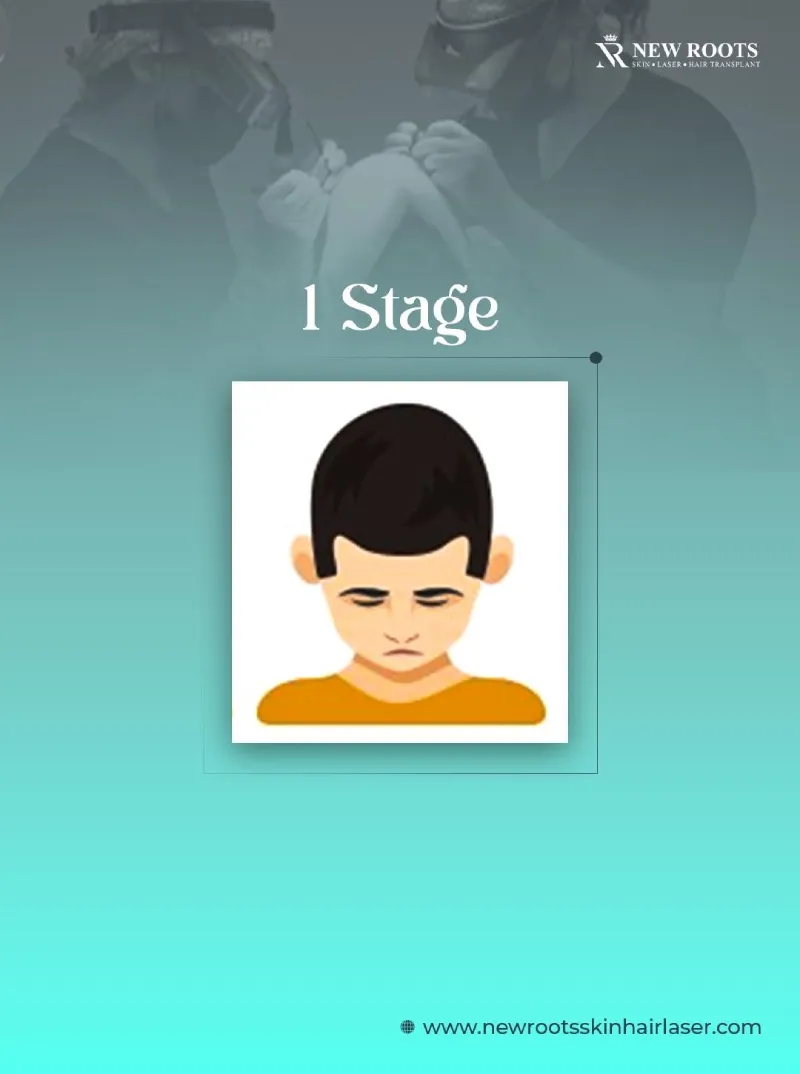
Stage 1:
By this stage, there is often no noticeable agent causing hairline regression. There is still a full head of hair on most people.
It is here that hair loss might be mild and difficult to notice. This is the stage when close monitoring of the hairline is required in order to identify even slight changes.
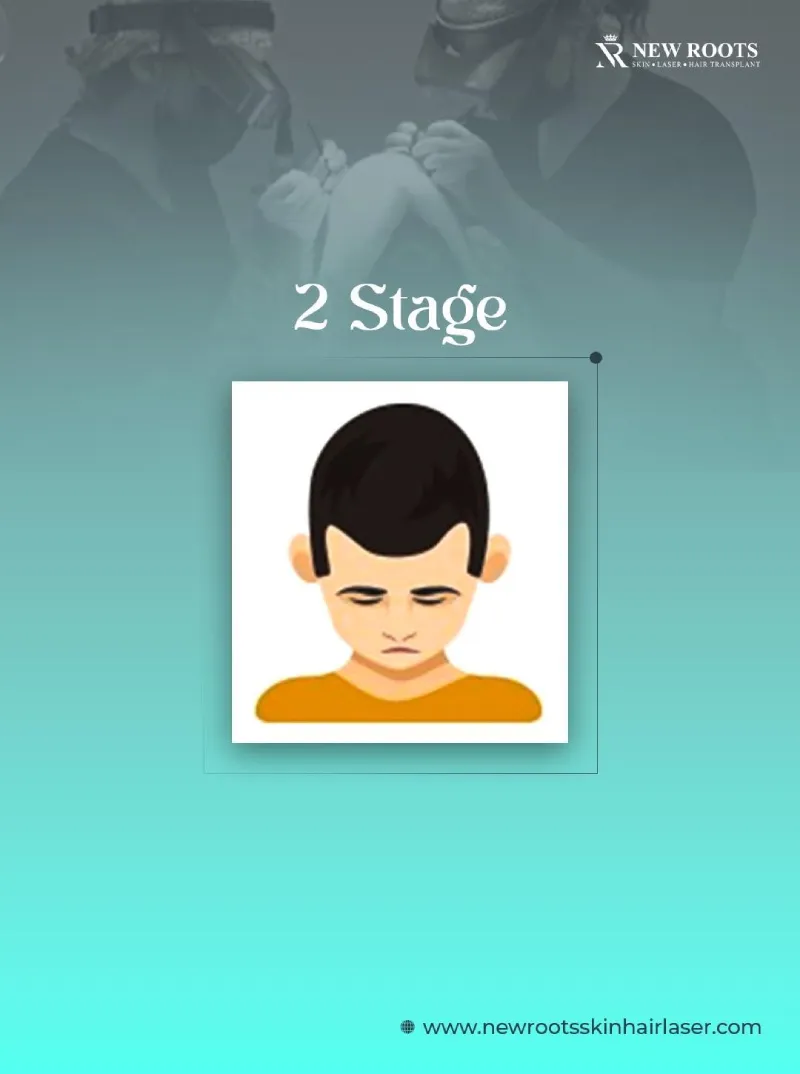
Stage 2:
Hair loss starts to reduce moderately, especially in the crown’s perimeters. Still, it is a small change that is usually noticed long before other signs of hair loss begin to manifest. Men may begin developing the typical V shape or the widow’s peak front of the head.
👉 Moderate Stages
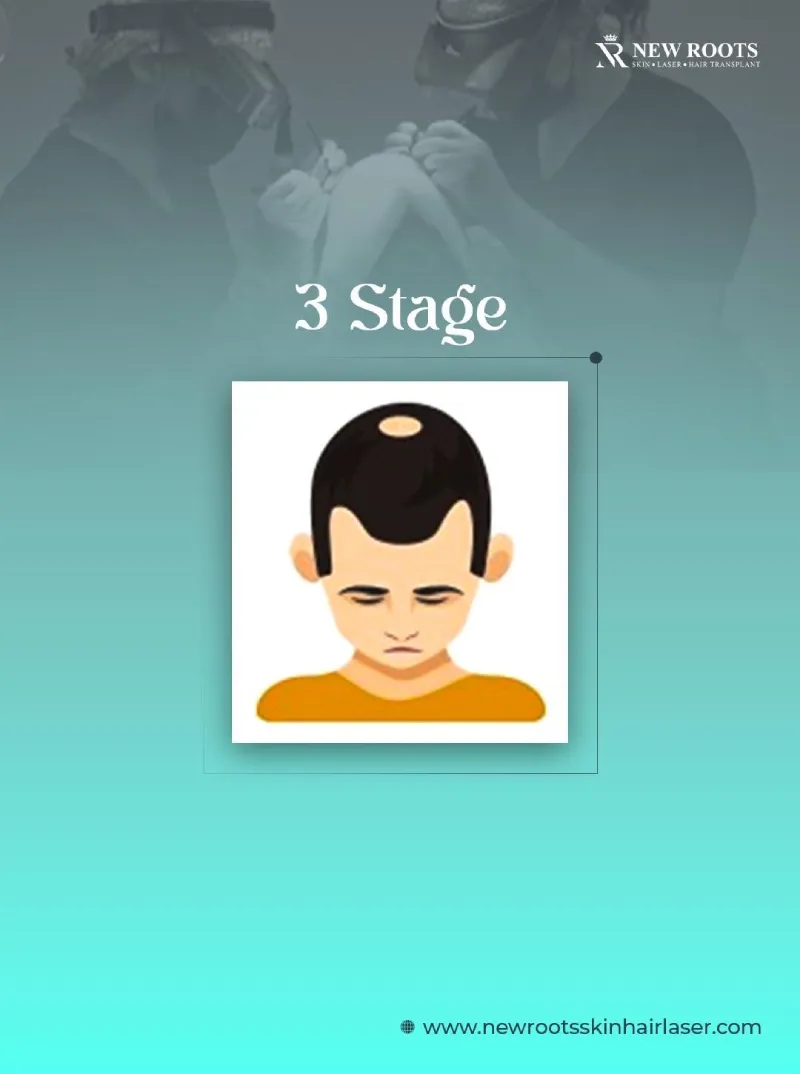
Stage 3:
This stage is distinguished by the fact that the hairline recedes slightly farther back than in stage 1 and often forms the letter ‘M’.
At this stage, hair loss increases at the temples, and the scalp can be seen even more clearly. This stage is characterized by emotional detriment and leads to seeking help from many people.
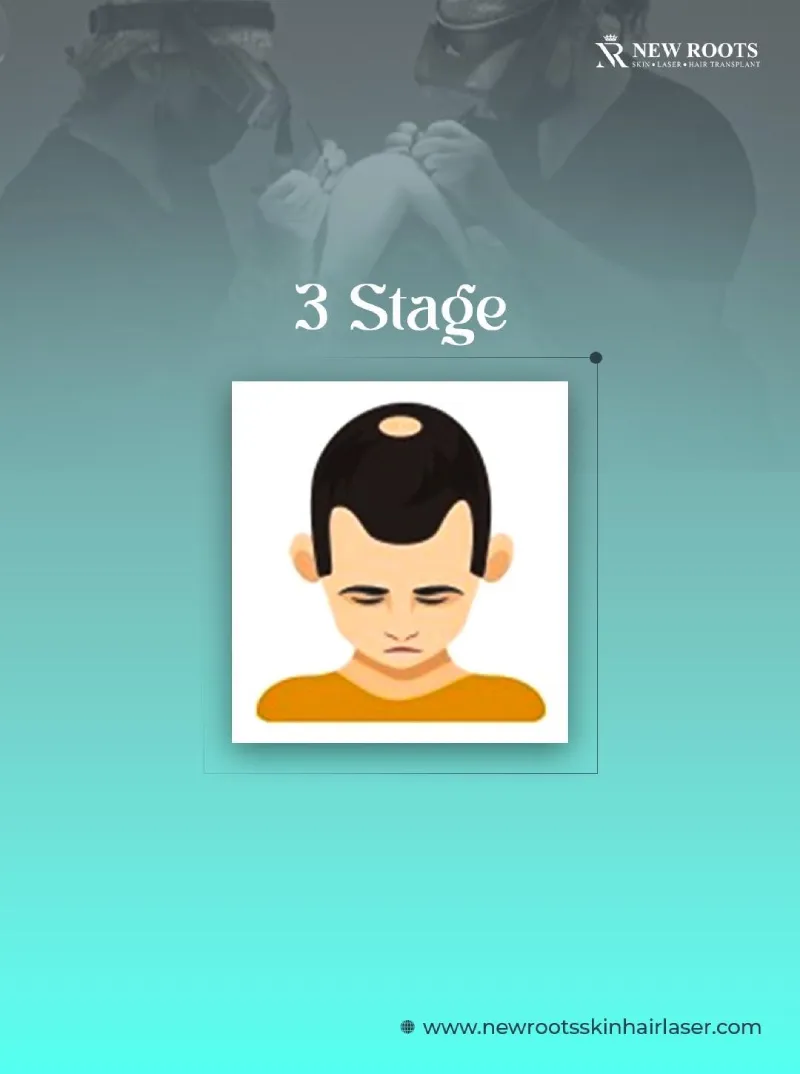
Stage 3 Vertex:
There is also a sub-stage known as stage 3 vertex within stage 3, in which hair thinning is also possible on the vertex of the scalp, at the crown of the head.
As for hairline recession, it could further be reduced; a bald patch may develop on the vertex, hence other hair loss issues.
👉 Advanced Stages
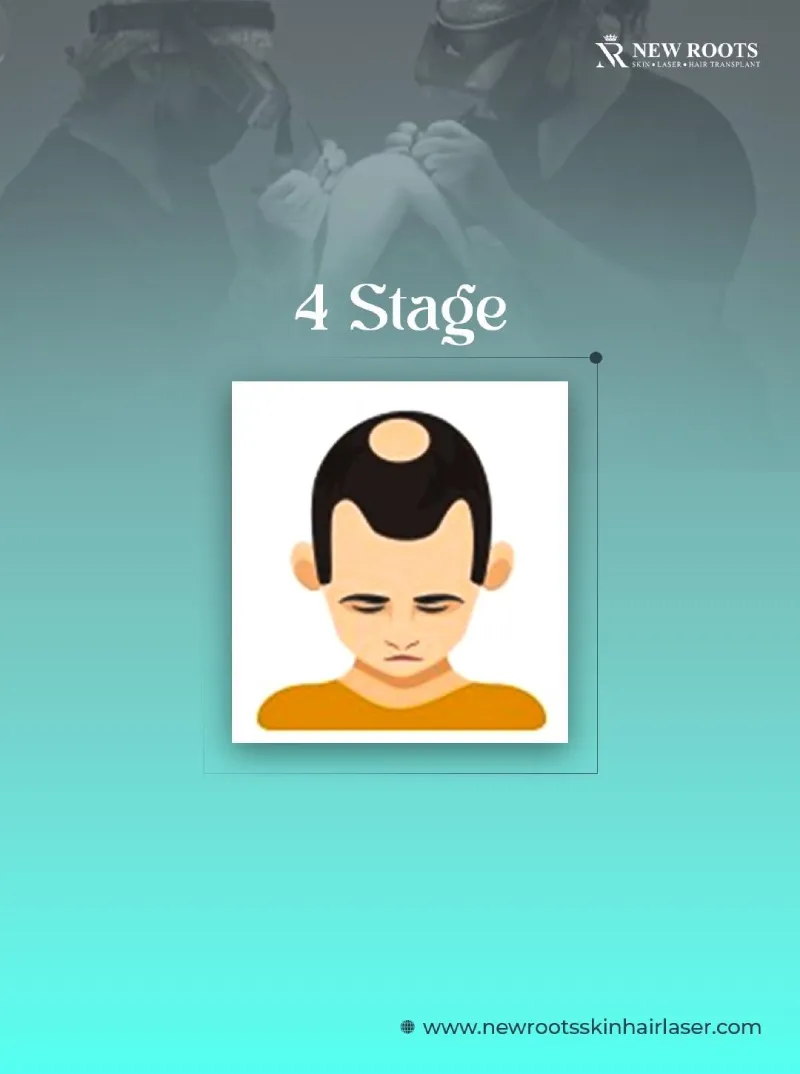
Stage 4:
The hairline spreads thinner and thinner, and the naked spot at the back of the head gets more and more visible.
The division between the affected hairline and the area of crown baldness is seen at this stage. It may be for this reason that a number of people may begin to seek professional treatments at this stage.
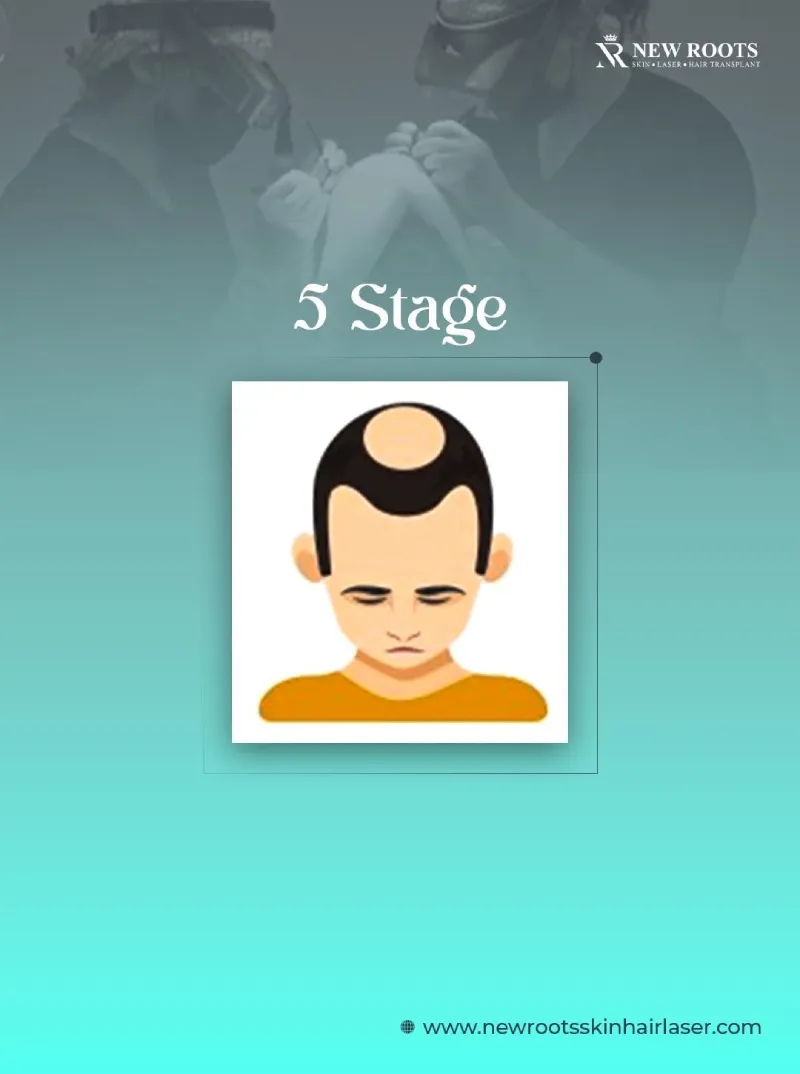
Stage 5:
Stage four is similar to Stage three, yet the strip of hair that separates the bald spot from the receding hairline here is shaved significantly thin.
At this stage, the individuals are considering attending various treatments that have aggressive methodologies, for instance, hair restoration therapies or surgeries.
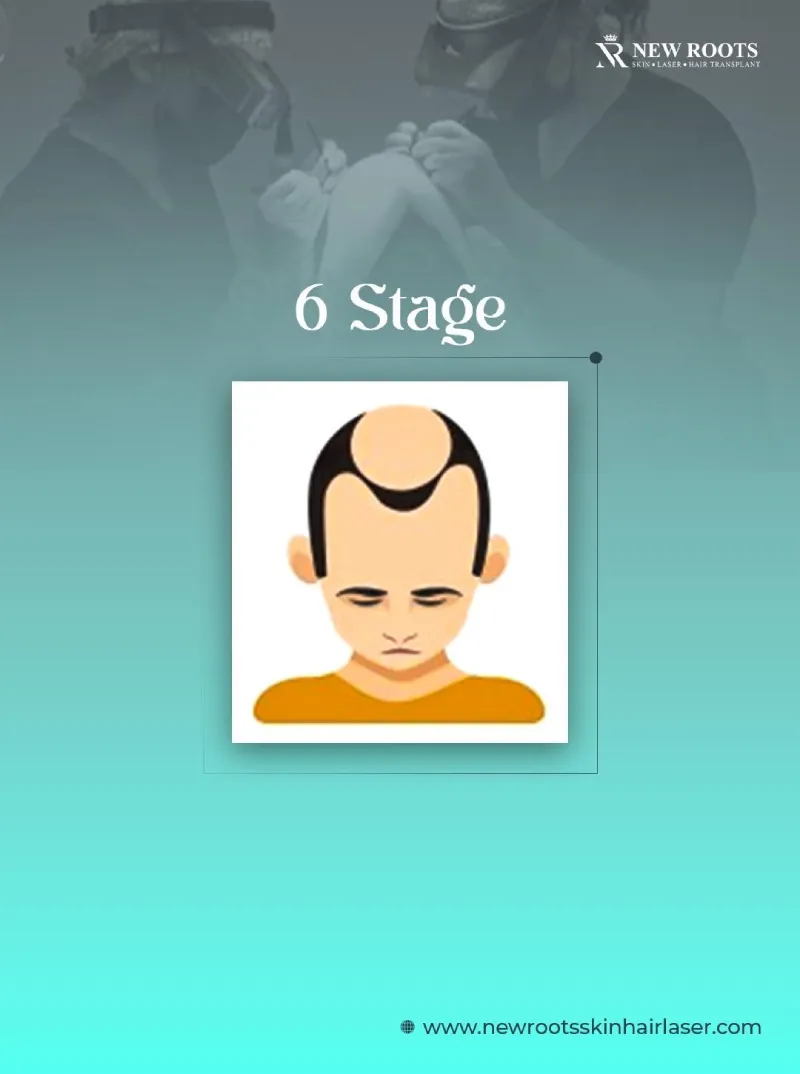
Stage 6:
Stage 6 in the progression: Here, the receding hairline and the bald patch have fused to make things look worse, since the scalp is more exposed to the skin.
However, it can still be left around the head area, perhaps on the sides. At this juncture, surgical treatments, particularly hair transplantation, appear attractive to most men with baldness.
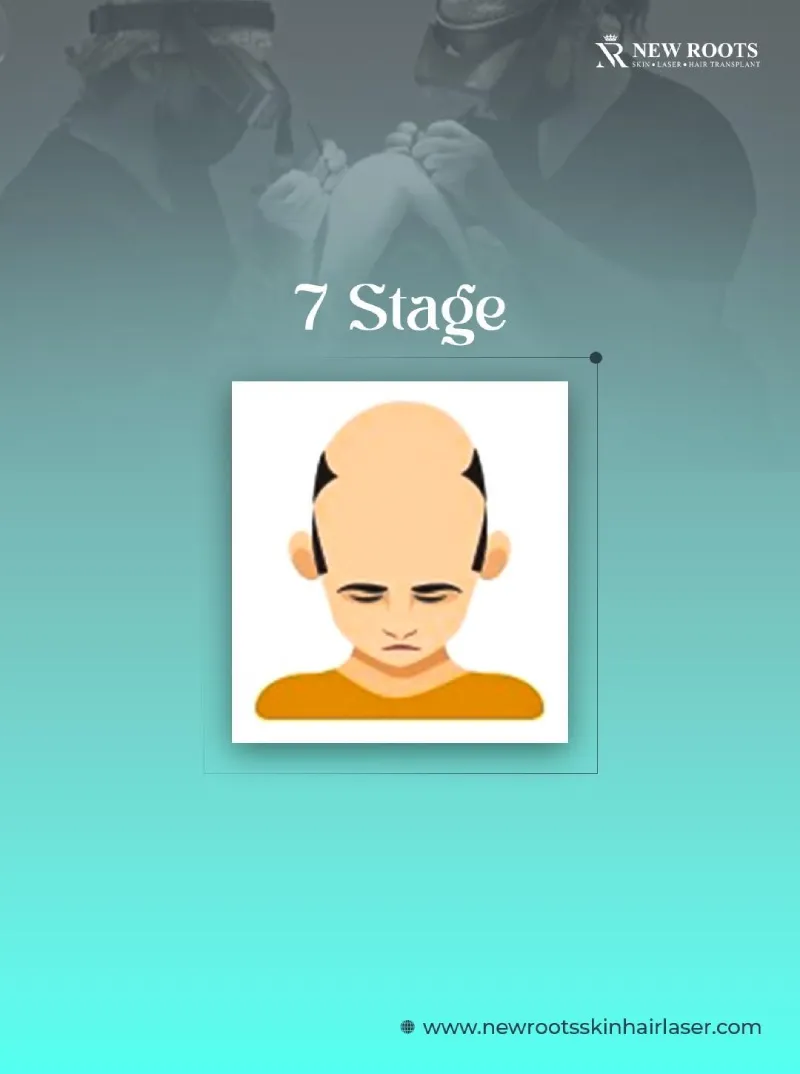
Stage 7:
This is the most advanced level of male pattern baldness, whereby a man is left with little to no head hair on their head but only a ring crown around the sides and back part.
The chances of recovery or graft survival are reduced, and such people may look for other options, using wigs or being comfortable with their shaven heads.
Why Must One Understand Stages
Recognizing the stages of a receding hairline is crucial for several reasons:
Early Intervention: It is realized that early detection allows one to seek early treatment, where hair loss could be slowed down and even the early stages of regrowth triggered.
Tailored Treatment Plans: Knowing which stages you are at helps the people who treat you come up with the right methods to handle your illness.
Realistic Expectations: When the progression is explained to the public, it becomes easy for the people to understand what is possible in terms of restoration and recovery.
Emotional Preparedness: Such knowledge can assist individuals to prepare mentally for future changes that they are likely to go through, thus creating a balanced or more healthy psychological reaction towards hair loss.
The Role of Hair Care for How to Get Hairline Back
If one is hoping to regain their lost hairline, having a sound hair care regimen is a must. The most effective practices can be selected with an emphasis on hair and scalp care and produce a beneficial result in a short time.
High-Quality Products: Purchase high-end hair care products that have been developed to improve the condition of human hair. It is worth pointing out that many companies like Dove present seasonal mousses and conditioners that can reduce hair shedding.
Gentle Products: Another activity in your hair care regimen should also embrace the use of mild products that do not contain some chemicals that worsen hair conditions.
Besides new hair growth, rigorous hair care makes a great impact not only on the healing process but also on the long-term maintenance of healthy hair.
Why Choose Us For Hair Recovery Products
Being from your hairline, incorporating quality items is maybe one of the most crucial factors in restoring hair growth. Here are some categories of products to consider:
Moisturizing Shampoos: Search for items that affect the hair’s ability to moisturize and nourish it, the lack of which leads to dry and brittle hair.
Conditioners for Scalp Health: Due to this, select conditioners that provide a healthy environment for the scalp for the production of hair follicles.
Serums and Oils: Adding natural oils, including coconut oil or jojoba oil, to your hair care regimen will allow the hair to get deep conditioning and improve its strength.
Selecting quality brands, more so when aiming at the health of your hair, can greatly influence your healing process.
Effects of Changes in Lifestyle on Hair.
The health of the hair largely depends on a number of lifestyle factors. Making conscious adjustments can lead to visible improvements in your hairline.
Balanced Diet: Take foods rich in vitamins and minerals to enhance hair growth. Different vitamins like the B group, D, and E vitamins, with minerals like zinc and iron, are special.
Stress Management: Engage in stress-lowering practices like practicing yoga or taking meditation to help reduce the hormones that are likely to damage hair.
Avoiding Heat Styling: Analgesia encourages: Otherwise, how do you suggest that heat styling tools not be used further on the hair?
These lifestyle changes help to make sure your hair stays healthy as you exercise on how to get your hairline back.
Specific Nutritional Aspects Related to Hair Strength
It is important for any couple going through hair thinning to pay a lot of attention to their diets. Here are some critical dietary considerations:
Intake of Biotin: Include products such as eggs, nuts, and whole grain foods that contain high biotin and are known to boost hair.
Hydration: Take enough water daily, because water is important for body hair and normal hair health.
Antioxidant-Rich Foods: Oranges and carrots contain antioxidants, which enhance blood flow and thereby support a healthy head.
It allows for strengthening your hair from the inside and contributes to its healing; thus, the emphasis is placed on nutrition.
Natural Remedies: Harnessing Nature's Power
Natural remedies are a good addition to your process on how to regrow the hairline. Incorporating these methods may enhance results and improve overall health.
Regular Application of Natural Oils: Coconut and argan oil can help to condition and also add value to the hair.
Herbal Remedies: Some of the herbs, which include aloe vera, hibiscus, and others, have been demonstrated to be beneficial for hair growth.
Scalp Massages: in case you gently massage your scalp often, then the blood flow in that area increases, causing the hair follicles to come back alive.
All these natural treatments can therefore help enrich the other methods you may be using and further boost the health of your hair.
Hair Masks and Their Benefits
Thus, the inclusion of hair masks will benefit any hair-washing regimen. Here are a
Deep Conditioning: A deep conditioner is essentially a hair mask that will help you when you have dry and brittle hair.
Strengthening Strands: Honey, avocado, and yogurt, for example, assist in nourishing the hair, accordingly preventing hair fall.
Promoting Growth: Their constant application enhances the performance of the game by stimulating the head, thereby encouraging hair growth.
Applying hair masks as early as now can boost your endeavors to gain back your hairline and have the volume of hair you want.
Comparison of the Professional Treatments for Hair Restoration
In cases where the person is expecting quick results, then he or she may need to go for professional systems. Here are a few effective options:
PRP Therapy: This treatment involves using your blood platelets to activate hair follicles, and it is usually very effective.
Hair Transplants: They include hair transplants, which will give a more permanent solution to a receding hairline than even hair growth formulas.
Topical Treatments: Several OTC products for hair stimulation, such as minoxidil, are very popular with good results.
Seeing your dermatologist or trichologist can give more targeted advice on how best to manage your conditions.
Recommended Daily Hair Regime for Hair Regrowth Along the Full Hairline
In addition to the aforementioned strategies, here are some daily care tips to consider:
Limit Hair Washing: It is wrong to wash your hair too often because it removes natural oils that contribute to further harm.
Use a Wide-Tooth Comb: It also discourages breakage when combing or untangling wet hair.
Protect from UV Exposure: Reducing the amount of exposure to the sun is good for hair maintenance since it does not make hair dry and brittle.
Adopting these care tips into your everyday practices will go a long way toward helping in your process of regaining your hairline.
Daily Care Tips for Maintaining a Full Hairline
In addition to the aforementioned strategies, here are a few daycare recommendations to keep in mind:
Restriction Hair Washing: Overwashing can strip herbal oils from your hair, leading to similar damage.
Use an Extensive Enamel Comb: This prevents breakage while detangling damp hair.
Guarding UV Exposure: Restricting sun exposure facilitates hair health by stopping dryness and brittleness.
Incorporating these care tips into your daily routine can support your journey toward recovering your hairline.
Conclusion
For one to have a fuller head of hair, they should do the following: wash their hair, eat a balanced diet, visit a hair stylist, maybe twice a year, and exercise.
With a combination of trying to pinpoint the root cause of hair thinning, using the right products, and making the appropriate changes in one’s diet, one should be able to learn how to get the hairline back.
It may take a while to reach the intended destination, but once all the right approaches and commitment are found, gorgeous hair and a young-looking face are quite achievable.
Q&A ASK
A number of the factors that lead to a receding hairline encompass genetics, hormonal changes in New York, DHT, pressure, growing old, and food plan, amongst others. Information on those factors results in the improvement of sound strategies able to counter and probably reverse hair loss.
Improving one’s health and developing a healthy lifestyle play a big role in the recovery of hair. Proper nutrition, including vitamin and mineral intake, some form of physical exercise, reduction of stress, and not taking substances like tobacco, can lead to increased blood flow, which is healthy for hair.
The application of fine hair care products for hair loss encourages the hair follicles, and the strands are fortified with natural nutrients. Additives such as biotin, caffeine, and natural oils improve one’s hair growth and may be useful in reversing a bald line.
Yes, they include oils like rosemary and peppermint, onion juice, and scalp massage. The following remedies can promote blood flow and improve hair growth, thus leaving a convenient way of dealing with a balding line.
The commercialized hair restoration methods encompass platelet-rich plasma remedy, hair transplant surgical treatment, topical application of minoxidil, and oral management of finasteride. A dermatologist advises on an appropriate treatment regimen primarily based on the particular skin situation of the affected person.
